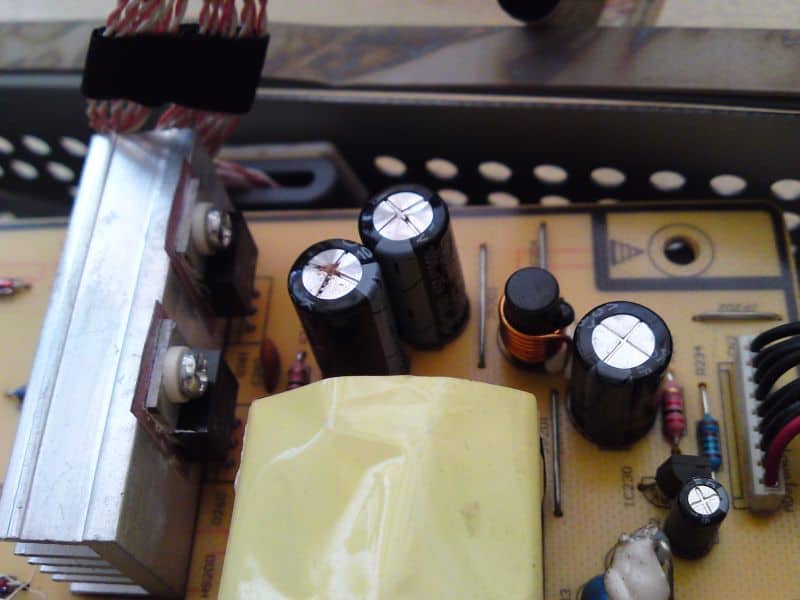Planned Obsolescence in External Hard Drives
Planned obsolescence is a term that was first coined by real estate broker Bernard London during the Great Depression. It was his philosophy to stimulate growth by making products that were deliberately designed to fail, forcing consumers to replace older products with newer ones.
In Bernard London’s original paper “Ending the Depression Through Planned Obsolescence”, he details his idea: “The original span of life of a commodity would be determined by competent engineers, economists and mathematicians, specialists in their fields.” With his plan he continues, “New products would constantly be pouring forth from the factories and marketplaces, to take the place of the obsolete, and the wheels of industry would be kept going and employment regularized and assured for the masses.”
Planned Obsolescence in External Hard Drives
If you have a problem connecting to your external hard drive, or for some reason you cannot retrieve data from it, you just might have fallen victim to planned obsolescence.
In many cases, the problem is not the hard drive itself, but rather the circuit board inside the case. Since almost every external hard drive (except for thumb drives) is just a regular hard drives in a plastic case with a USB-SATA adapter bridge, a failure with the printed circuit board (PCB) containing the USB-SATA bridge is the first place you should look for the cause of the problem.
If you have been wiggling the USB cable of your external hard drive back and forth to establish a connection, then you should stop, and copy your most critical data to another drive immediately.
The USB port is the most used part of an external hard drive, so it takes the most wear and tear. Each time you plug and unplug the USB cord, you are putting stress on the port inside the case. If you have ever tried to open the case around an external hard drive, you will find that it is very difficult to open. And yet the USB port is usually soldered with only four little points that are very easy to break.
Once that USB port separates from the USB-SATA bridging PCB, a computer can no longer read the drive. When this happens, a normal person would think that their hard drive had died, even if the drive itself was still perfectly healthy. They would be forced to buy another external drive, thus fulfilling the idea of planned obsolescence.
It is hard to tell if the solder that holds the USB port is deliberately designed to be fragile. But whether all the same, storing all your important information on an external hard drive with such a pivotal piece that can fail so easily is not ideal. Let’s put it this way: engineers could easily design a way to reinforce the USB port, yet most external drives are still made with this flaw.
The good news is that a failure in the USB-SATA bridging PCB does not necessarily mean that your data is gone. Here is a simple guide from iFixIt that details how a simple temporary fix is all that stands between you and your data.
But please beware, if you have data that is sensitive, it is not a good idea to tinker inside your hard drive yourself. It can be very easy to mess up and lose all of your data forever. Hard drives are complex beasts and data recovery professionals exist for a good reason.
Some external hard drives, especially desktop drives, have removable USB-SATA bridges, but these bridges themselves may contain special encryption metadata, and cannot be so easily replaced. Many external drives, such as Western Digital My Passports do not even have a removable USB-SATA bridge, and they cannot be repaired at all.
It used to be easy to swap out a broken hard drive PCB with another one from a similar model, but these days it rarely works. Modern hard drives are complex, and some of them store metadata that is necessary for the drive to function on the control board. So, even if you replace the PCB with one from the same model, even if it has a similar serial number, and even if it is the same firmware version–there is no guarantee that the hard drive will work.
It is very easy to see how your external drive could be broken, while the hard drive containing your data could be completely intact. However, it is hard to accurately diagnose a hard drive’s exact cause of failure outside of a data recovery lab. This is why you need to utilize a data recovery service for these devices. There is no way to know if the problem is simply the USB connection, or something worse.
Another common failure with the USB-SATA bridging PCBs are the capacitors, which are often located in the worst spot imaginable—next to the heat sink. This means that the caps, which are very sensitive element to heat, are placed in the hottest area of the circuit board. This dramatically decreases their lifespan, especially for hard drives that are often kept in cases below a desk or other non-ventilated areas. Again, the engineers that design these circuit boards are not stupid. They know where to place capacitors on a circuit board—but this is still a common problem in all kinds of electronic devices.

Take, for example, these capacitors in the image to the left. The leftmost two are close to a heat source and are starting to break (notice the brownish substance on top). On the other hand, the one that is farthest away is still intact. Heat is the biggest cause of hard drive failure. That’s why when you walk into a data center, the first thing you will notice is how cold it is. Data centers are trying to prevent heat from causing failures; unlike the designers of these external drives, who seem to be deliberately trying to make hard drives fail.
Some manufacturers also use sub-par components that age faster than better ones would. The savings in cost for manufacturing companies are practically non-existent, but failing devices produce more consumer demand, which makes them more money. But all of this comes at a cost for all of us.
Planned Obsolescence and E-Waste
Whenever we throw away a device that is seemingly broken, we forget about it. But the amount of waste that these broken devices produce is staggering. These days, e-waste is one of the fastest-growing categories of garbage. According to the United Nations, “Some 20 to 50 million metric tonnes of e-waste are generated worldwide every year”
Out of all that waste, only 12 percent of it is ever recycled—and, that number is grossly inflated. Many companies get away with claiming they are “environmentally friendly” by recycling their e-waste, when in actuality they are sending all these broken devices to developing countries around the world and claiming they are “donations” that bring new technologies to poor countries.
In these poor countries, young children often pick through the mountains of scrap in order to find copper and other valuable materials. The methods they use to extract these materials often release many toxic substances which cause a lot of health problems for us humans, as well as our environment.
With concerns about global warming and the future of this planet, it is very important to make devices that have long lifespans and can be repaired when they are broken.
Our Advice on Planned Obsolescence and Data Loss
If you want to avoid planned obsolescence and extend the life of your external hard drive, make sure to research the hard drive you plan to buy, and see if there are forums and other sites that talk about common problems with the drives malfunctioning.
If you feel that something in your external hard drive is loose and you are having intermittent connection issues, back up your most critical data immediately. If your external drive appears to have failed, do not hesitate to take it to a professional. If your hard drive falls victim to planned obsolescence in our throw-away society, professional data recovery experts are here to retrieve your critical data for you.
Article written by Gabriel Bly, Blog Editor for Colocation America. Gabriel Bly is a Los Angeles based writer. He has worked for several publications, and he has a background in journalism and data management.

